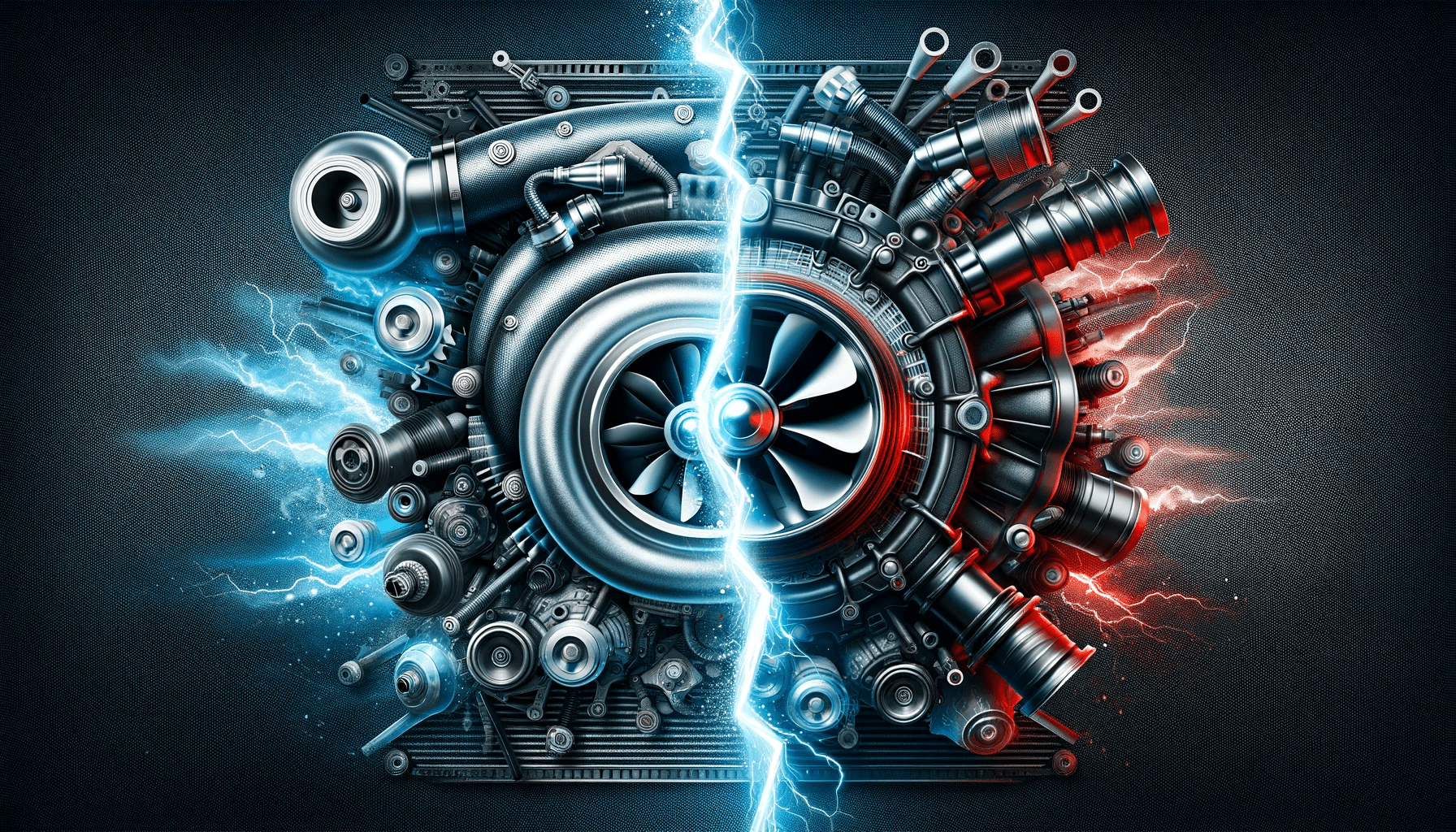Key Takeaways
| Turbocharging | Supercharging |
|---|---|
| Increased efficiency and fuel economy | Instant power delivery |
| May experience lag | No lag; consistent power |
| Typically lower initial cost | Higher initial cost |
| Better for high-altitude performance | Less complex maintenance |
| Complex installation | Easier to install |
Turbochargers and superchargers are both forced induction systems. They compress the air flowing into the engine, allowing more air (and thus more fuel) to be combusted, producing more power. While they have the same goal, they differ significantly in their operation, cost, and performance outcomes. Turbocharging vs Supercharging- let’s find the best version for you!
Turbocharging: A High-Efficiency Booster

Turbocharged engines use exhaust gas to spin a turbine, which then compresses the air going into the engine’s intake. This method is highly efficient, as it utilizes waste energy from the exhaust.
Pros:
- Increased Efficiency: Turbochargers can improve fuel economy by reusing exhaust gases (Diesel Engine Tuning Tips).
- High Altitude Performance: They adjust to air density, making them suitable for high altitudes.
Cons:
- Turbo Lag: The time taken for the turbo to spool up can result in a delay in acceleration.
- Complex Installation: Turbo systems can be complex to install and may require additional components.
Supercharging: Instant Power
Superchargers are driven by a belt connected to the engine’s crankshaft, providing immediate throttle response.
Pros:
- Instant Power: Superchargers provide power with no lag, making them ideal for situations where immediate acceleration is needed (Supercharger for Jeep JK).
- Simplicity: They are generally simpler to install and maintain compared to turbochargers.
Cons:
- Fuel Economy: Superchargers can decrease fuel economy because they are powered directly by the engine.
- Cost: They often come with a higher initial cost due to the mechanical complexities involved.
Real-Life Application
In the automotive world, turbochargers are often seen in vehicles that balance performance with efficiency, like some European sports cars. In contrast, superchargers are the go-to for American muscle cars where immediate power is more valued than efficiency.
Turbocharging vs Supercharging: Installation and Tuning
When choosing between turbocharging and supercharging, consider the tuning potential and the complexity of the installation:
- Turbocharged Tuning Methods: Offers significant tuning flexibility, from mild to wild (Turbocharged Tuning Methods).
- Ease of Installation: Superchargers often win with their less complicated setup.
Performance and Cost Comparison
| Aspect | Turbocharging | Supercharging |
|---|---|---|
| Initial Cost | Lower | Higher |
| Power Delivery | Gradual; with lag | Immediate; no lag |
| Fuel Efficiency | Higher | Lower |
| Complexity | More complex | Simpler |
| Maintenance | Can be more demanding | Generally easier |
Conclusion on Turbocharging vs Supercharging
Choosing between turbocharging and supercharging comes down to personal preference, vehicle type, and desired performance characteristics. Turbocharging might be your best bet for a balance of power and efficiency. However, if immediate throttle response and simpler maintenance are your top priorities, supercharging could be the way to go.
Both systems have their place in the automotive world, and both can significantly enhance your vehicle’s performance when properly installed and tuned. Whether you’re looking to conquer the drag strip or optimize your ride for a spirited weekend drive, understanding the nuances of each system is key to making the right choice.
For further insights into engine tuning and maximizing your vehicle’s potential, explore the basics at Basics of Engine Upgrades 101.